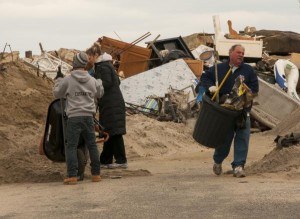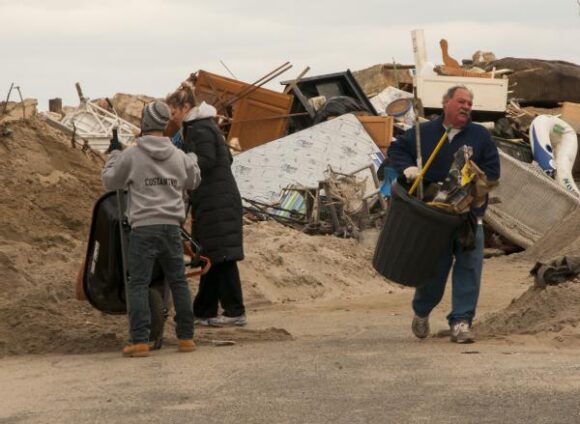More than seven months after Superstorm Sandy devastated parts of the Jersey shore, thousands of homeowners are getting some relief from crushing rebuilding and insurance costs.
The federal government has updated its flood maps laying out the likelihood of damage from future storms. The new maps significantly scale back the level of highest danger, the so-called V zones, which had caused many homeowners the greatest aggravation.
Critics said the standards released late last year were too aggressive and did not take into account individual conditions in beach towns. Many homeowners in areas near bays, rivers or streams were lumped together with homes near the ocean in terms of calculating their risk of damage from storm-driven waves.
The new maps from the Federal Emergency Management Agency reduce the velocity zones in Ocean County by about half.

“It took seven months but FEMA is finally saying, ‘We made some big mistakes,”‘ said George Kasimos of Toms River, a founder of a grass roots group called Stop FEMA Now that was formed to oppose the original maps and their tough standards. “It’s the first good news we’ve gotten in seven months.”
Kasimos said his home in a back-bay area in Toms River took on a foot and a half of water during the Oct. 29 storm. It was originally placed in a V zone, but has now been downgraded to a less-threatened A zone.
The practical effect of that change is tens of thousands of dollars less in rebuilding and insurance costs, he said. Before, his flood insurance was due to increase to as much as $30,000 a year. Now, it might be in the neighborhood of $6,000 to $8,000 – better, but still much more than the $1,000 he paid before the storm.
The draft maps were published Sunday for Atlantic, Ocean, Monmouth and Hudson counties. Those are the areas that were hardest hit by Superstorm Sandy last year.
When finalized, the maps will be used to set flood insurance premiums.
The state and federal government are now using a draft version of the maps to determine how property owners can rebuild damaged structures. But some homeowners say those maps require homes to be raised higher than they need to be in some areas.
U.S. Sen. Robert Menendez and Gov. Chris Christie have said the new version of the maps will offer some relief.
The maps replace the so-called Advisory Base Flood Elevation maps that were issued by the agency last year. FEMA says the new ones reflect a more precise modeling analysis of current flood hazards, including wave analysis, and a more detailed study of other specific conditions that could affect flood risk.
In January. Gov. Chris Christie adopted those advisory base elevation maps as the state’s standard for rebuilding, even while cautioning they were likely to be changed. The governor said he acted when he did to give homeowners who wanted to start rebuilding quickly some guidance on how to do it.
But by March, he was criticizing the earlier maps, saying they were too aggressive and needed to be scaled back.
Still to come are the final Flood Insurance Rate Maps. These maps will incorporate previous data and add more details about specific flood risk conditions in communities throughout the state, with a priority placed on those in coastal areas facing the highest risk.
Was this article valuable?
Here are more articles you may enjoy.


 Standard Chartered Settles $2 Billion Iranian Sanction Suit in London
Standard Chartered Settles $2 Billion Iranian Sanction Suit in London  Losses Top $20 Billion in Asia Floods as Climate Risks Grow
Losses Top $20 Billion in Asia Floods as Climate Risks Grow  State Farm Sued Over Policies Backed by Distressed Insurer PHL
State Farm Sued Over Policies Backed by Distressed Insurer PHL  Florida And East Coast Will See Big Losses From More Cat 5 Storms, Researchers Say
Florida And East Coast Will See Big Losses From More Cat 5 Storms, Researchers Say 